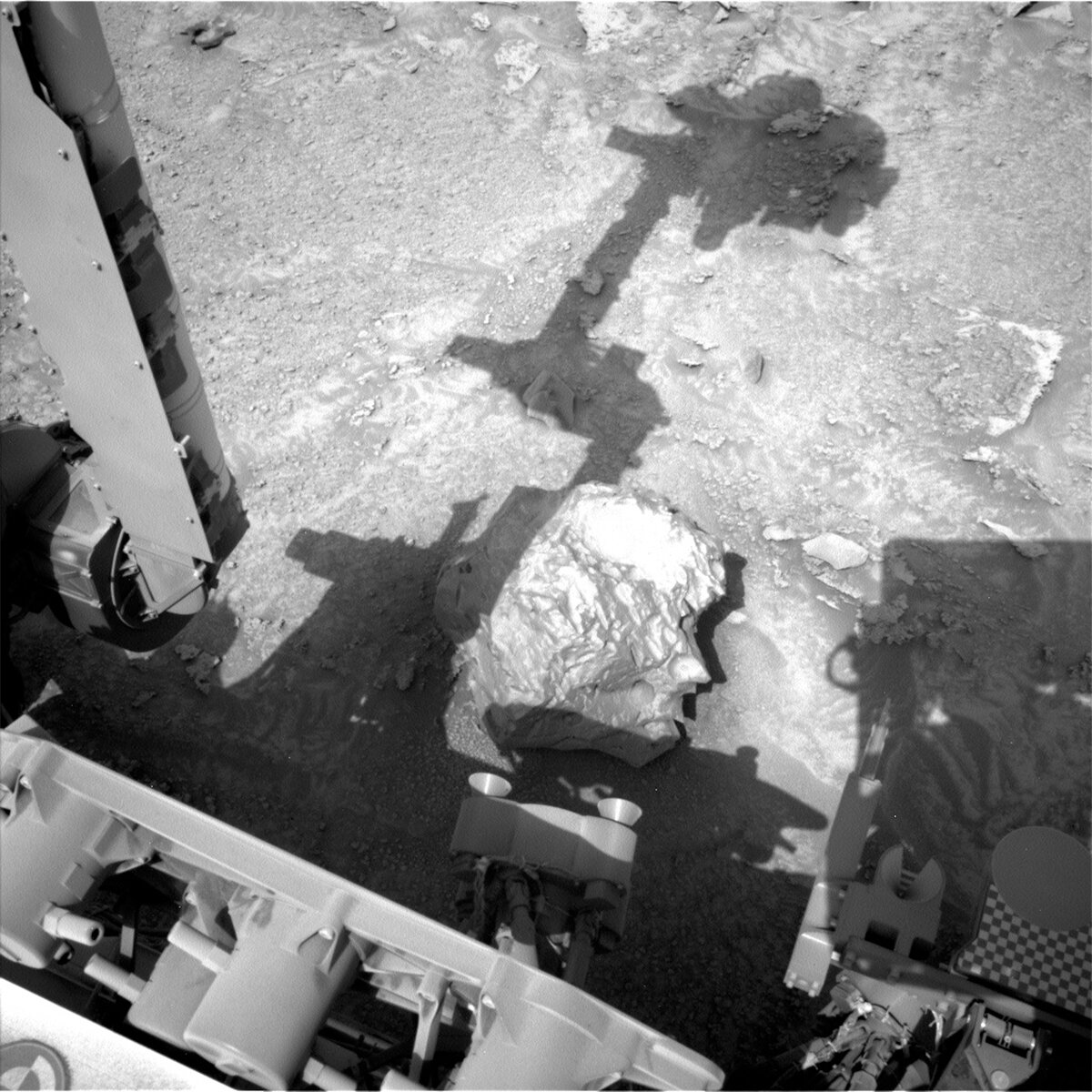4 min read

Today we came in to see another really beautiful workspace. The image shows the rock on which we are doing contact science, “Cacao,” and the shadow of the unstowed arm in the afternoon light. The rock we are parked in front of is one of several very dark-colored blocks in this area which seem to have come from elsewhere, and we are calling “foreign stones.” Our investigations will help determine if this is a block from elsewhere on Mars that just has been weathered in an interesting way or if it is a meteorite. I served as the Tactical Uplink Lead (TUL) today and helped manage to get all the complicated activities into today’s plan.
On the first sol of our weekend plan, we are doing a lot of imaging. We begin with some stereo Mastcams of Cacao and “Gavidia,” which is another dark rock nearby. We also take Mastcam of a potential future drive target. Also we take a CCAM LIBS observation of “Maroa,” a lighter gray rock also in the workspace, as well as an RMI of the Inverted channel that we have been periodically observing. We wrap up the first sol’s targeted science with a Navcam dust devil movie. Later in the afternoon, we do a cloud survey with Mastcam and Navcam, as we are back in cloud season on Mars.
Later in the afternoon, we begin contact science on two targets, one named “Curare” and the other “Cururu,” both of which are on the top of the Cacao rock. This is a very tricky set of observations because Cacao is close in front of us and very tall, so we need to be extra careful to avoid hitting it with the arm. In addition to taking MAHLI close-up images of the rock, we also are imaging the drill bit after our attempt to drill at Encanto in the marker band and evening APXS integrations on both targets before stowing the arm and going to sleep for the night.
On the second sol of the plan we do more targeted science, including Mastcam and CCAM LIBS of the target “Curuxuim,” which is another target on the Cacao rock as well as ChemCam RMI of a distant target and a Mastcam survey of some of the other foreign stones in the area. We also do another later-afternoon cloud survey.
On the third sol of the plan, we have two targeted science blocks. One in the morning is dedicated to ChemCam LIBS on the target “Cinarucu,” another small gray rock in the workspace and some atmospheric observations (a Mastcam solar tau and a Navcam large dust devil survey). The afternoon block is dedicated to a multispectral mosaic of Cacao and a mosaic of the “Chenapau” butte as well as imaging the color calibration target. In the later afternoon, we then have a short drive to another nearby transition in the Marker Band. The hope is to be able to perform both contact science and imaging on it. Science is calling it a “triple junction” because from orbit it looks like a step up where three different units are in close proximity and it looks like something interesting is going on there. This drive is fairly simple as the terrain, for the most part, is flat and hazard-free. However, the very start of the drive required a little extra care as we are driving over the large Cacao rock; it is about 30cm tall so we need to be careful but we still have plenty of clearance to drive over it. After we drive, if everything is still safe, we will unstow the arm to get a better view of our new workspace.
The next morning, before we hand over to the next plan, we have an early set of environmental observations, including Navcam zenith movie, suprahorizon movie, and a north-facing line-of-site image and a Mastcam solar tau.
Written by Ashley Stroupe, Mission Operations Engineer at NASA's Jet Propulsion Laboratory







